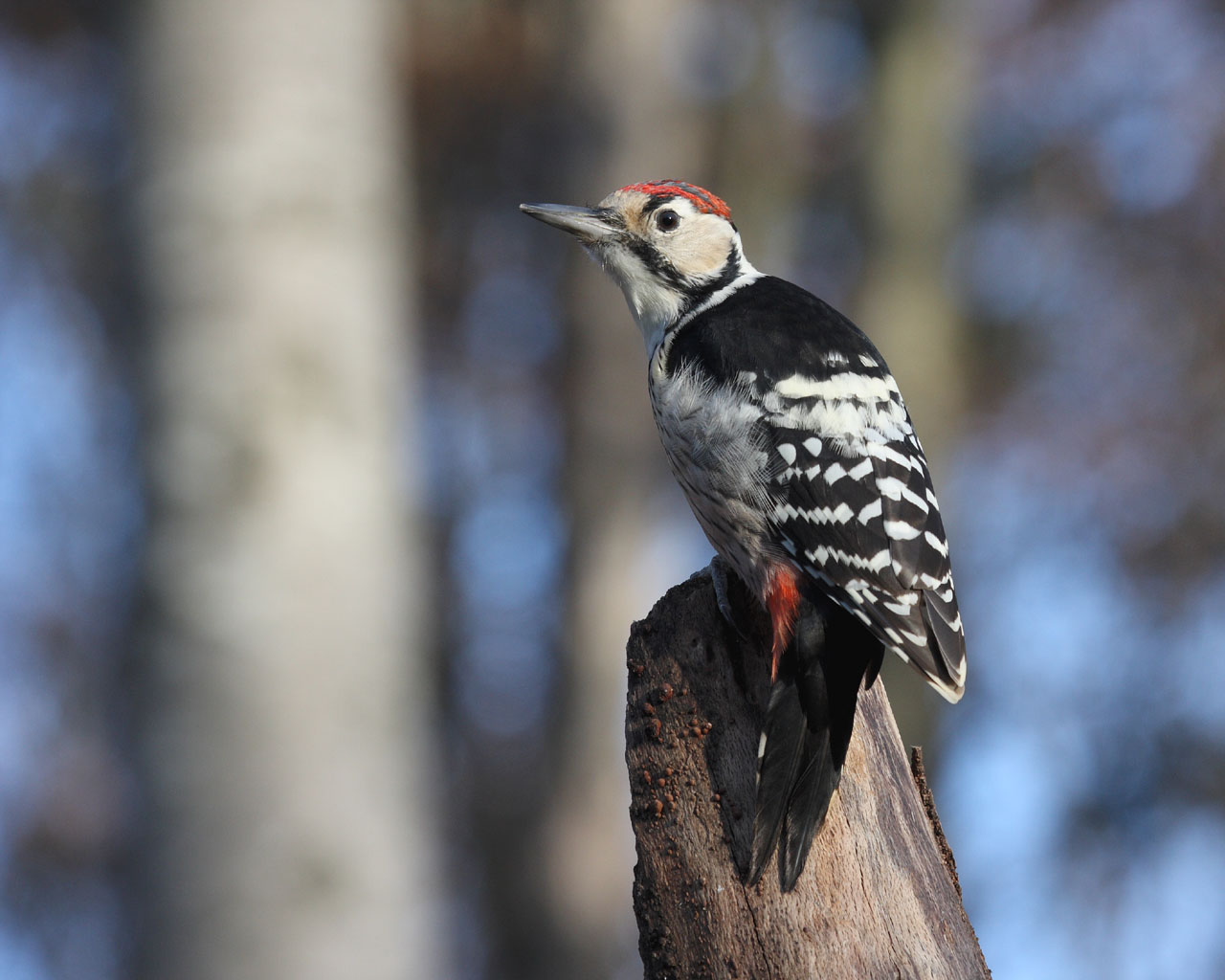
Dendrocopos leucotos
SUBFAMILY
Picinae
TAXONOMY
Picus leucotos Bechstein, 1802.
OTHER COMMON NAMES
English: Owston’s woodpecker; French: Pic а dos blanc; German:
Weissrьckenspecht; Spanish: Carpintero de Lomo Blanco.
PHYSICAL CHARACTERISTICS
9.8–11.0 in (25–28 cm), 3.2–5.6 oz (92–158 g); A pied woodpecker
with white cheeks, white forehead and lower back,
white breast shading to pale pink and deeper pink vent area;
male with prominent red cap; female with black cap. Birds in
southeast Europe have vermiculated white back.
DISTRIBUTION
Found in a broad band across forested areas of northern Eurasia
from Fennoscandia to Kamchatka and Japan; many isolated
populations in montane and island areas
HABITAT
Wet mixed forest, often near rivers or lakes
BEHAVIOR
Has a large home range, moving great distances to areas with
many dead and dying trees in order to find preferred foods.
Drumming has been likened to a bouncing ping-pong ball—
a strong beginning accelerating to a weaker end “bouncing
to a halt.”
FEEDING ECOLOGY AND DIET
Feeds primarily on insects, especially wood–boring beetles;
spends considerable time excavating beetle larvae from near the
base of willows and alders.
REPRODUCTIVE BIOLOGY
Courtship often begins in February; nests often high in rotted
stub or utility pole; clutch of 3–5 eggs incubated by both parents
for 14–16 days; both adults tend nestlings which fledge at
27–28 days.
CONSERVATION STATUS
Not threatened globally, but considered regionally threatened
by forest clearing and disturbance.
SIGNIFICANCE TO HUMANS
None known.
Photo Gallery of - White-backed woodpecker




 Animalia Life
Animalia Life